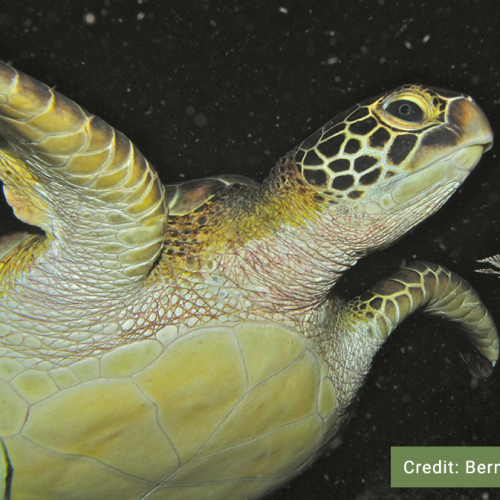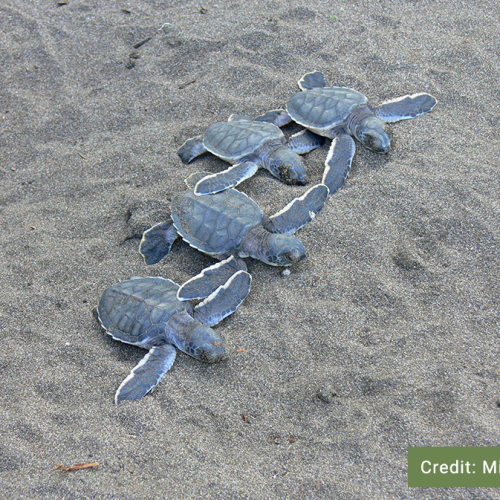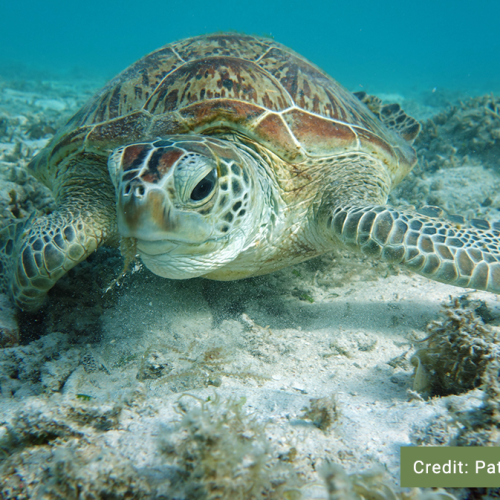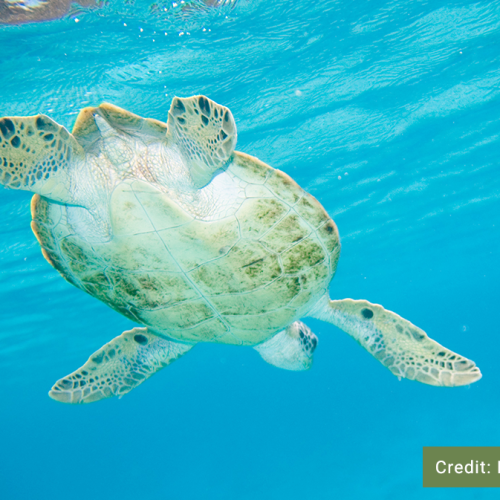Credit: Jim Trodel
Green Sea Turtle
Chelonia mydas
Description
The Green Sea Turtle is a large, solitary, marine turtle species that is very rare in the Pacific waters of Canada. They are the largest of the hard-shelled turtles and may reach lengths of up to 1.5 m, and may weigh up to 315 kg, although most individuals are smaller and lighter than this. The carapaceDefinition:The hard upper shell of a turtle, crustacean, or arachnid. is mildly heart-shaped, lightly serrated at the back, and has variable colouration that can change over time ranging from green, brown, grey, black, and yellow. The plastonDefinition:The nearly flat part of the shell structure on the underside of a turtle or other animal. on the underside is a pale yellow. The skin of the turtle is olive-green to dark brown, while the underside of the head, limbs, and tail are creamy-white to yellow. The head is beaked but unhooked with a short neck and snout. The limbs are modified for life in marine environments and are paddle-shaped, with males having a single curved claw on their front flippers that is much larger than in females.
Listen to the Indigenous words for “turtle” here!
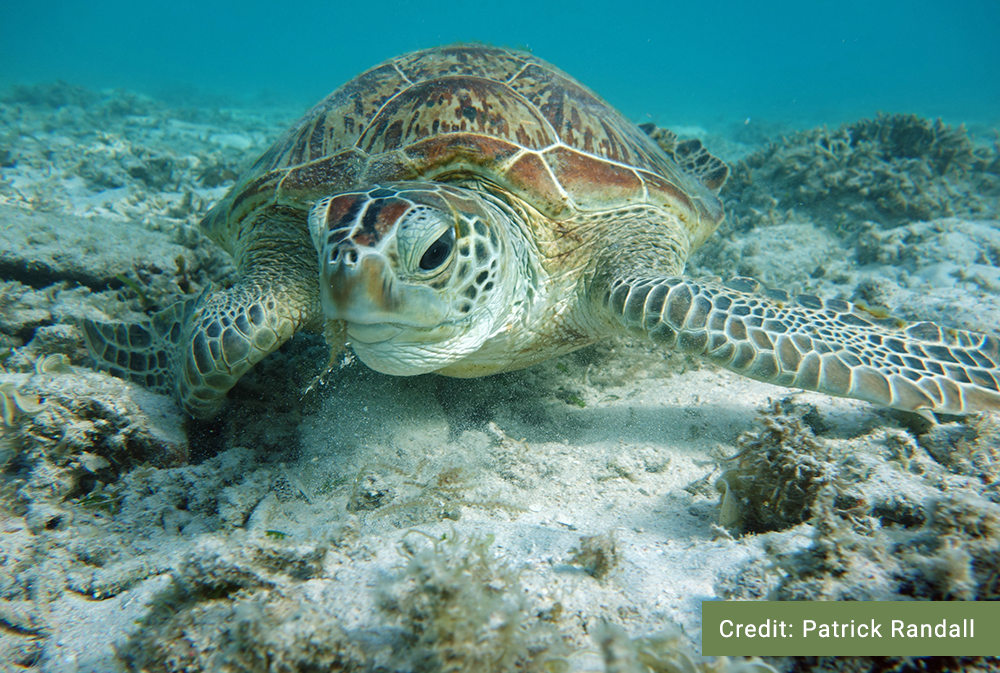
Similar Species
In Canada, the Green Sea Turtle may be confused with the Pacific Leatherback Sea Turtle or the Olive Ridley Sea Turtle, although all sea turtle species are accidental in Canada and are generally very rare. The Pacific Leatherback Sea Turtle has no scutes on the shell, but is instead leathery and lacks the bright colouration of the Green Sea Turtle. The Olive Ridley Sea Turtle may be coloured similarly to the Green Sea Turtle, but they are generally much smaller and have 6 or more costal scutes, whereas Green Sea Turtles usually have 4.
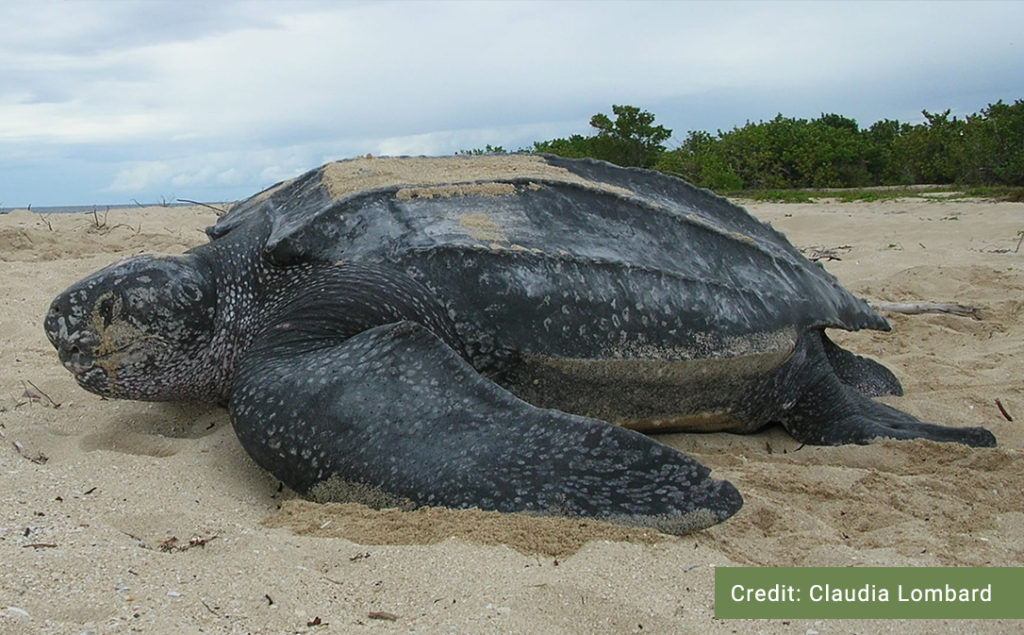
Pacific Leatherback Sea Turtle
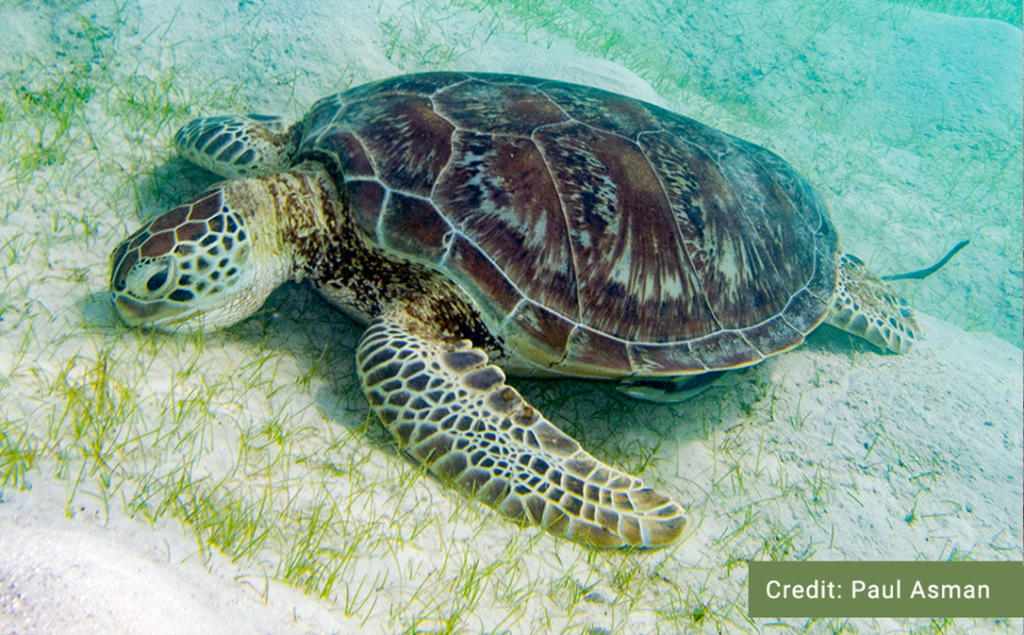
Green Sea Turtle

Olive Ridley Sea Turtle
Distribution
The Green Sea Turtle is a highly migratory species with a circum-global distribution. They are primarily found in the tropical waters and subtropical waters of the Atlantic Ocean, Indian Ocean, Mediterranean Sea, and Pacific Ocean. It is found in the coastal waters of over 180 countries and nests in more than 80 of these countries. In the Pacific, it ranges from southern Alaska to Chile. Green Sea Turtles are primarily tropical, but periodically will follow warm currents up to British Columbia and Alaska. Green Sea Turtles are considered accidental in British Columbia, as the waters are generally too cold for long-term survival. There are few records of Green Sea Turtles in British Columbia, and many of them have occurred recently, leading many biologists to assume that Green Sea Turtles may be more common in B.C. waters than previously thought. Green Sea Turtles are at risk of global extinction, thus, information on distribution and population sizes is very important. If you see a Sea Turtle report your sightings!
British Columbia Cetacean and Sea Turtle Sightings Network (BCCSN)
1-866-I SAW ONE (1-866-472-9663)
Habitat
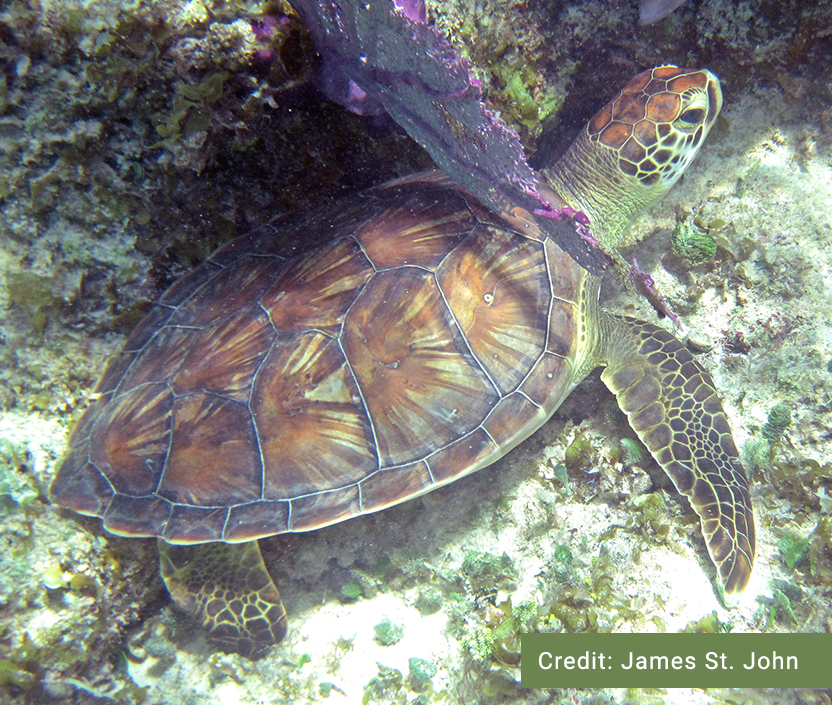
Reproduction
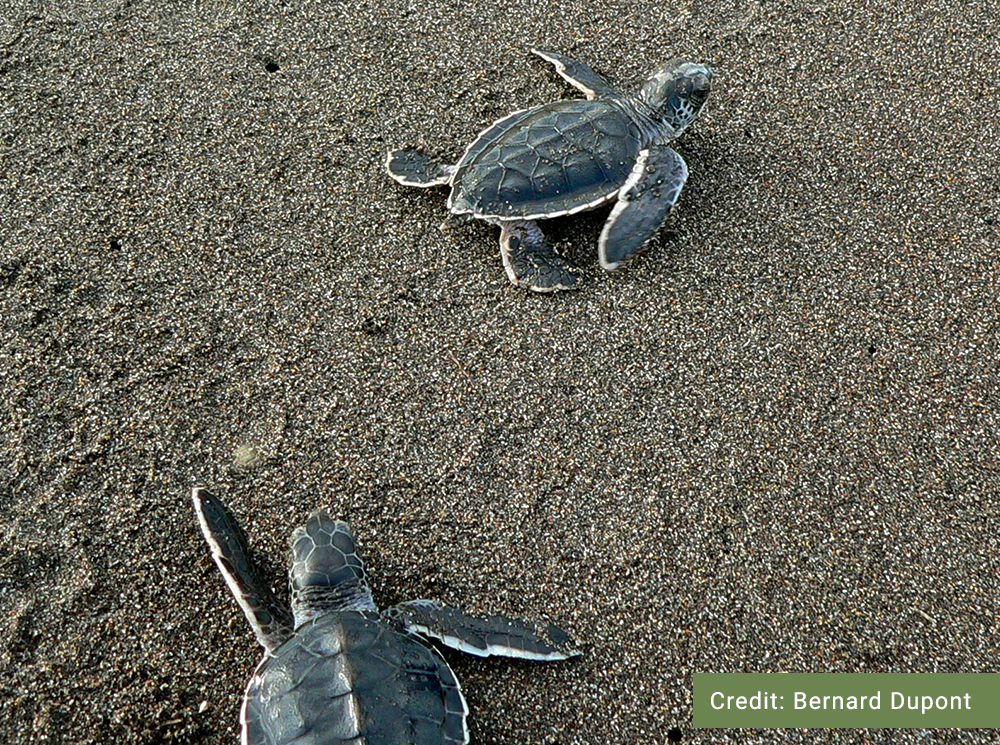
Diet
Conservation Status
Global: G3 (2014)
Provincial: SNA (2018)
BC List: Accidental
Learn more about conservation status rankings here
Threats

Did You Know?
Fact #1
Fact #2
Fact #3
Species Account Author: Marcus Atkins
B.C. Conservation Data Centre. 2009. Species Summary: Chelonia mydas. B.C. Minist. of Environment. Available: https://a100.gov.bc.ca/pub/eswp/ (accessed Jun 22, 2021).
B.C. Conservation Data Centre. 2021. BC Species and Ecosystems Explorer. B.C. Minist. of Environ. Victoria, B.C. Available: https://a100.gov.bc.ca/pub/eswp/ (accessed Jun 22, 2021).
http://canadianherpetology.ca/species/species_page.html?cname=Green%20Sea%20Turtle
http://linnet.geog.ubc.ca/efauna/Atlas/Atlas.aspx?sciname=Chelonia%20mydas
https://www.bcreptiles.ca/turtles/pacificgreen.htm


